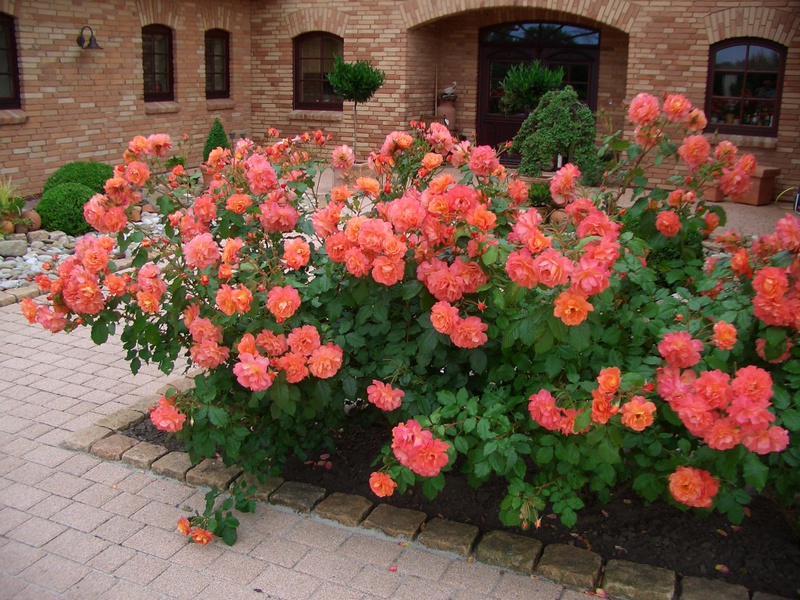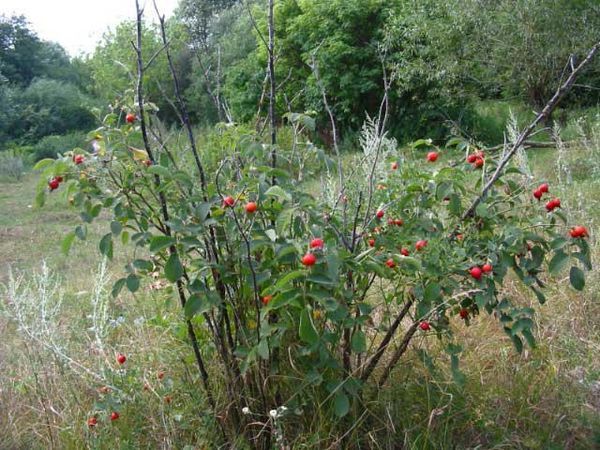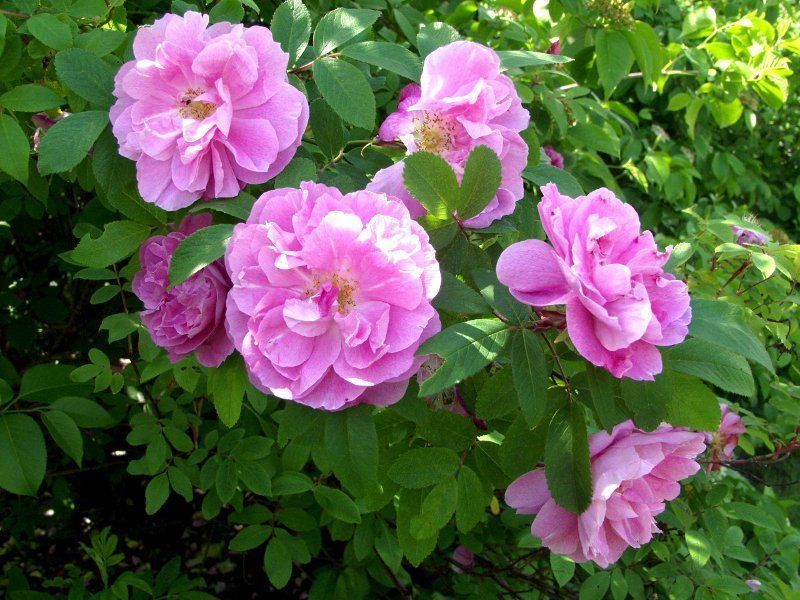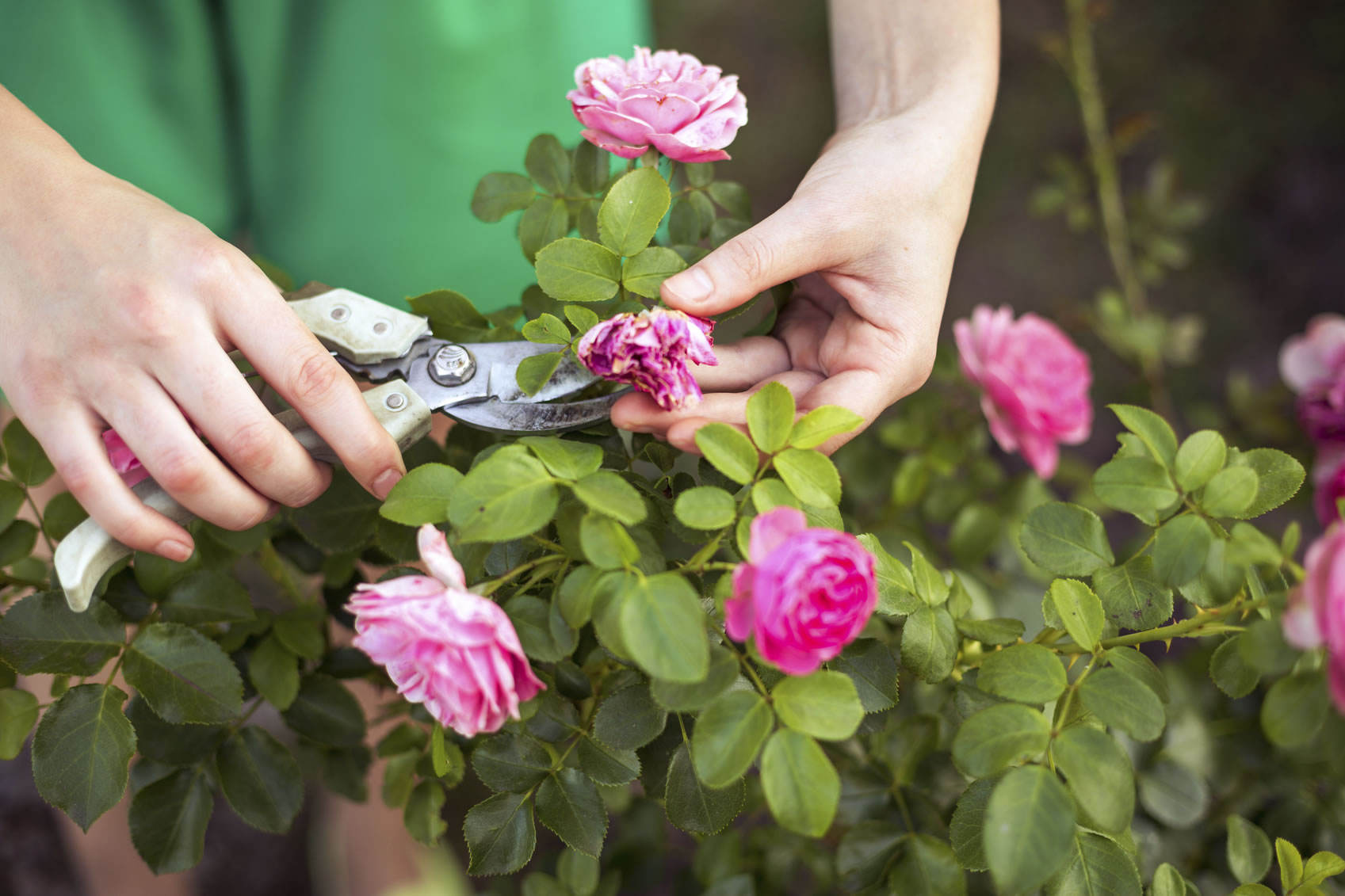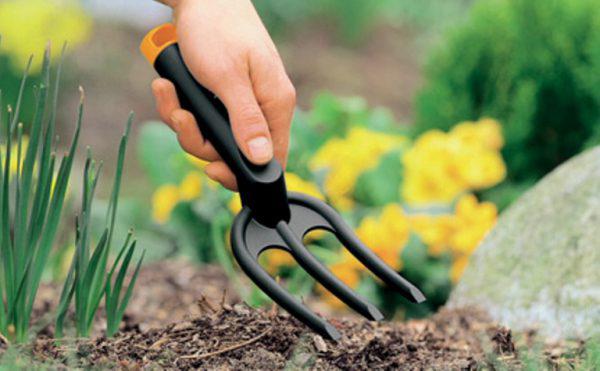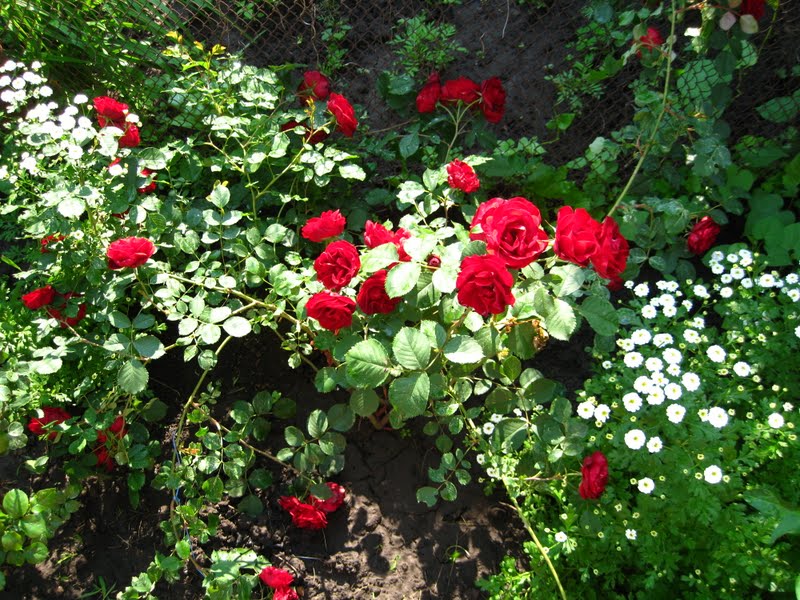Content:
What is a park rose? This is a rose that was bred from a rose hip. Many consider it to be a cultivated decorative rosehip, since the outside flower resembles it. Park roses were bred by the English breeder D. Austin in the late 20th century, but it is believed that they were grown in ancient Greece. Today, park roses are planted to decorate plots and parks, creating flower beds and hedges. The variety of varieties allows you to form a unique landscape design.
Plant characteristics
Depending on the variety, the plant height can reach 1.5 m. Park roses are distinguished by long and early flowering (about 2 months) and high resistance to frost. They bloom in late May or early June - earlier than all other rose bushes.
The bushes of such roses are voluminous and lush. The buds are large, have many petals (about 100-150 pcs.), In most varieties - double. Roses have a very pleasant intense scent. Pollinated by insects and wind.
In appearance and some features, the park rose looks like a hybrid tea. Both belong to the same genus Rosehip, have double buds, love light and careful care. But there are still differences - different degrees of frost resistance and the need for pruning.
The hybrid tea rose is very sensitive to cold weather, while the park rose quietly winters even in regions with a harsh climate. A park rose does not require pruning, and a hybrid tea should be pruned about 3 times a year. Due to its bushiness, the rose of the park type is ideal for the formation of hedges, which cannot be said about the hybrid tea group, since its representatives have a small height, but their colors are much richer.
Characteristics of species and varieties of crops
Park roses are classified into numerous types. The most common names and descriptions are:
Floribunda
The height of these roses is from 30 to 100 cm, the diameter of the buds is from 4 to 10 cm. They bloom in the middle of summer and have numerous colors. The most popular varieties:
- park rose Remy Martin,
- Fluorescent.
Rose hips
Their height is up to 3 m. They require shelter from frost for the winter. Among florists are valued:
- rose Louise Bugnet - white rose,
- Marchenland.
Musk hybrids
These varieties reach a height of up to 4 m, they have large spherical buds. The diameter of the flowers is 6-8 cm. The most popular musk hybrids are:
- Elmshorn rose, also known as Elmshorn rose,
- Likhterlo.
Historical roses (old varieties)
Most often, their height is 90-140 cm. These flowers have wide spreading bushes. Roses can grow in the shade and have a strong scent. The most popular variety is the Jacques Cartier pink rose.
Shrubs
This group appeared 50 years ago. All shrubs are considered shrub types. They are high, low, creeping, climbing. They are not afraid of severe frosts. The flowering of such roses is lush and abundant, as well as prolonged or repeated (in remontant species). The aroma is very expressive. Unpretentious varieties:
- rose Hope for Humanity (Hope for Humanity),
- Rose Moden Fireglow,
- Rosa Ghislaine de Feligonde (Ghislaine de Feligonde),
- Rose John Franklin,
- Rose J.P. J. P. Connell,
- Rose Agranta.
Explorer Series
These are high quality Canadian roses. It takes root well in Russia. Resistant to diseases and pests. They have long flowering, and most of the varieties are remontant (they bloom 2 times per season). They smell faint. Colors from light to dark red. The disadvantage is poor resistance to prolonged precipitation. Most often, flower growers buy for planting Cuthbert Grant roses, also known as Cuthbert Grant roses.
Bush roses
Their height is from 25 cm to 3 m. Shoots on perennial bushes can be annual. There are varieties without thorns. The size of the flower reaches 80 cm in diameter. This group has a variety of colors. The shape of the bud is spherical, conical, flat, peony. The shape of the bush can be spreading or in the form of a pyramid. The most popular variety in this group is the Eifelsauber park rose
Features of planting and care
Taking care of park roses is easy. Better planted 1-2-year-old seedlings with a closed root system. Before sending to open ground, you need to inspect the roots for rot damage. Saplings are planted from each other at a distance of 70 cm, no less, since the park rose bushes strongly and needs space.
The place for the rose should be protected from strong winds and drafts. Better if it is a small slope towards the south. It is not recommended to plant nearby plants that have a strong pungent odor, which will drown out the aroma of a rose bush. Under the trees is also not the best place, as they create a lot of shade, which roses do not like very much. In addition, they will not have enough moisture there.
A park rose needs loamy soil. If the soil in the flower garden is clay, sand or a little humus should be added. If the soil, on the contrary, is sandy, then compost should be added. This is very important, since the further development of the seedling depends on the quality of the soil.
You can plant park roses both in spring and autumn. However, with an autumn planting, you will have to insulate the still fragile seedling and cover it with non-woven material, since the cold and low temperatures for its root system in the first few years are destructive. Unlike other varieties, this rose does not need additional feeding in the first year of life.
It is important to constantly loosen the soil throughout the season. In the second year, in the spring, you can fertilize with the introduction of natural fertilizers (manure). In the fall, before the cold weather, you need to huddle the bushes about 20 cm.This will help her stay warm and survive the winter well.
In summer, frequent watering is not required. It should be rare but abundant. It will be enough for one bucket under the bush 1 time in 10-12 days. The rare application of a large amount of water at a time will harden the roots, which are forced to seek moisture at great depths in the soil. Thus, they tolerate frost better in winter.
Frequent and poor watering only harms the root system. Because of them, the roots grow poorly in depth, remaining on the surface. Thus, they are prone to freezing, and when loosening, there is a chance of damage.
In the middle of autumn, the bushes can be pinched or cut off by no more than 5 cm. Only young, overgrown shoots should be pinched and cut off. If there are too many of them, you can remove unnecessary ones, leaving a few of the strongest (5-7 pcs.), Forming a bush as required: in the form of a ball or in some other way.
Reproduction of park roses occurs in several ways, but the most popular option is cuttings.
You can root a young shoot in the ground without cutting it off the bush. To do this, the branch is cut in the part where the leaf grows, bent to the ground and fixed with a spacer.Next, you need to sprinkle the shoot with earth and water it periodically. The next year, you can cut it off from the mother bush and transplant it to another place.
Another way is to cut the cuttings. Shoots cut in summer are planted in damp ground and form a mini-greenhouse, covered with a transparent plastic bottle. During the month, cuttings can only be sprayed, watering is prohibited. The transplant can be performed after a year.
Park roses that do not require shelter for the winter
Do not worry about the safety of the bush in frost, park roses winter well, even if they are not covered. But, even if the bush freezes in winter, soon new young shoots will sprout at the base.
There are 3 types of roses that can endure the winter cold:
- Medium-hardy. They can freeze out in places where there is no snow cover. It is recommended to bend the bushes to the ground. Among these types of roses are Remy Martin and Elmshorn.
- Winter hardy. They tolerate winter quite well in an upright position, but they can freeze out. These include Jacques Cartier and Cuthbert Grant.
- Absolutely winter hardy. The most hardy roses that do not freeze out even at extremely low temperatures. These are the varieties of roses Cuthbert Grant, Hope for Humanity, Morden Fireglow and Louise Bagnet.
Major diseases and pests of culture
Most often, park roses suffer from the following ailments and parasites:
- Powdery mildew. This is a gray coating on the leaves or the entire bush. Foliage, as a rule, dries up and falls off. The disease threatens the death of the entire bush. For treatment, you need to spray the rose with a solution of copper sulfate, Bordeaux liquid or a copper-soap mixture.
- Rust. In spring, bumps can be seen on stems and foliage. Below on the leaves empty bubbles form with spores of the fungus, which is the causative agent of the disease. The affected areas are cut out, the plant is sprayed with Bordeaux liquid, a decoction of nettle or wormwood, or a soap solution.
- Black spot. Dark brown spots appear on the leaves with or without yellow edges. The affected leaves are removed, the bush is treated with a solution of foundationol, a decoction of horsetail or Bordeaux liquid.
- Gray rot. The fungus affects the stems and leaves of the rose, which are covered with a gray bloom and appear fluffy. Buds on such bushes fall off, rot, do not bloom. Small sores may also appear, and the leaves may turn yellow and fall off. To prevent disease, the bush is treated with a solution containing manganese.
- Insects. Various beetles, mites, butterflies and aphids seriously harm plants. Defeats are always visible to the naked eye. The injured leaves are removed, the insects are collected, and the bushes are treated with insecticides (fufanon, aktara, actellik) or soap solutions. You can use decoctions of tobacco, garlic and onions with pepper. Someone also uses kerosene, but safety measures must be observed with it.
Park roses are an excellent choice for those who cannot afford to spend a lot of time caring for garden flowers. Unpretentious in cultivation, they will become the highlight of any personal plot.
